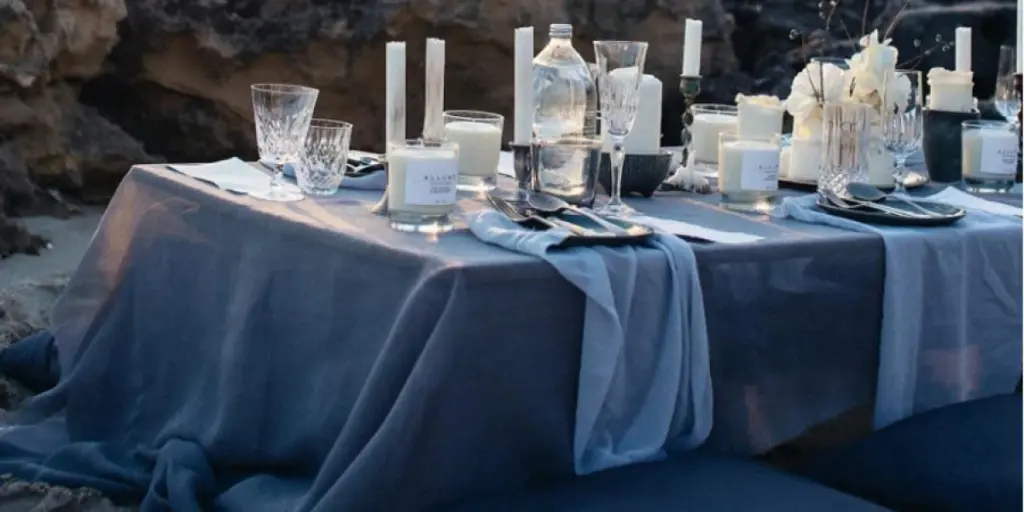In 2024, the tablecloth market continues to evolve, reflecting a blend of traditional elegance and modern innovation. Tablecloths, more than mere dining accessories, have become integral in defining the ambiance of a variety of settings, from corporate events to casual gatherings. The latest trends reveal a shift towards materials and designs that not only enhance aesthetic appeal but also offer practical benefits like durability and ease of maintenance. As these trends unfold, they bring forth an array of choices, each catering to specific needs and preferences, thereby shaping the way dining spaces are presented and experienced. This evolution in tablecloth trends signifies a deeper understanding of their role in both functionality and style in diverse environments.
Table of Contents:
1. Variety and applications of tablecloths
2. 2024 tablecloth market insights
3. Criteria for selecting tablecloths
4. Leading tablecloth models of 2024
5. Conclusion
Variety and applications of tablecloths
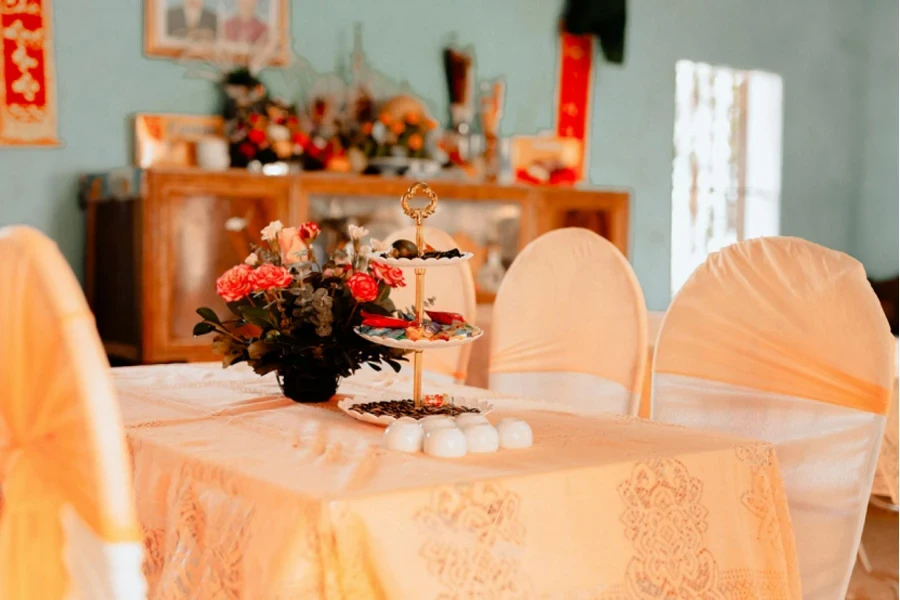
The landscape of tablecloths in 2024 is marked by a diverse array of fabric types, each serving distinct functions and catering to various settings. This diversity reflects a deeper understanding of the role tablecloths play in enhancing dining experiences across different environments.
Fabric types and their functions
The choice of fabric is pivotal in determining the functionality and aesthetic of a tablecloth. Polyester, known for its durability and ease of maintenance, emerges as a popular choice, especially in high-traffic settings like corporate events or outdoor gatherings. Its resistance to stains and wrinkles makes it a practical option for environments where longevity and a clean appearance are paramount. Linen, with its natural texture and elegance, is favored in settings where a sophisticated yet inviting ambiance is desired. Its ability to add a touch of refinement makes it ideal for upscale dining experiences or special occasions. Cotton, valued for its versatility and comfort, finds its place in more casual settings. Its softness and absorbency, coupled with a wide range of design possibilities, make it a go-to choice for everyday dining environments where comfort and a homely feel are sought.
Occasion-specific tablecloths
The application of tablecloths extends beyond mere functionality to embrace the theme and purpose of various occasions. For corporate events, tablecloths are chosen not only for their practical attributes but also for their ability to reflect a professional and polished image. In these settings, subtle designs and muted colors often take precedence, aligning with the formal nature of such gatherings. Casual settings, on the other hand, allow for more creativity and vibrancy in tablecloth choices. Here, the emphasis is on creating a welcoming and relaxed atmosphere, with patterns and colors that add warmth and liveliness to the dining experience. Outdoor events present a unique set of requirements, with tablecloths needing to withstand natural elements. Durability, resistance to fading, and ease of cleaning are key considerations, ensuring that the tablecloths remain functional and visually appealing even in challenging outdoor conditions.
In 2024, the selection of tablecloths is not just about choosing a fabric but about understanding its role in the context of the event. The fabric type, design, and functionality all converge to create an experience that resonates with the occasion’s purpose and setting. This nuanced approach to selecting tablecloths reflects a maturation in the industry, where every detail is thoughtfully considered to enhance the overall dining experience.
2024 tablecloth market insights
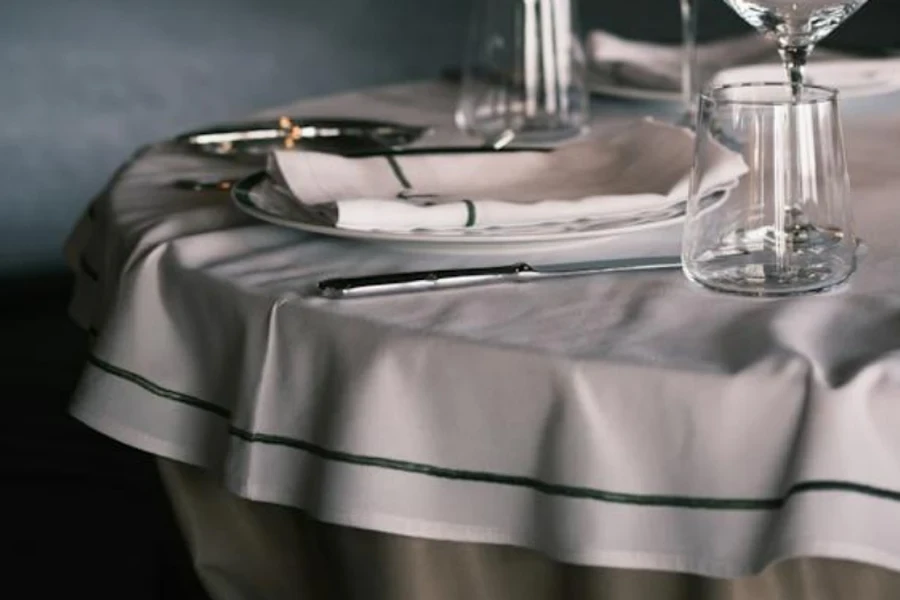
Current market dynamics
The tablecloth market in 2024 is experiencing a significant transformation, driven by evolving consumer needs and technological advancements. The global table linen market is projected to grow steadily, with a forecasted compound annual growth rate (CAGR) of 6.1% to 6.9% from 2021 to 2031. This growth is fueled by changing lifestyles and the burgeoning real estate market, which in turn drives spending on home decoration and interior design, including table linens. The availability of linen products at reasonable prices has also increased buying frequency, indicating a robust market expansion.
Consumer preferences and demand
Consumer behavior in the tablecloth market is increasingly influenced by the growing number of working-class professionals in developing countries like India, Brazil, and China. This demographic shift enables higher spending on decorative home products, including table linens. There’s a noticeable trend towards natural and eco-friendly fibers, reflecting a growing environmental consciousness among both manufacturers and consumers. This shift is expected to generate significant revenue for the global market during the forecast period.
Innovations in product quality and size of tablecloths and napkins are major factors attracting consumers. Changing consumer preferences, with the emergence of new styles and trends, are leading to product adoption and market growth. For instance, IKEA Holdings BV’s launch of dining textile products made from 100% polyester yarn and seaweed as base material, with a surface coating of clear nitrocellulose lacquer, exemplifies the innovation in the market.
The tablecloth market in 2024 is thus characterized by a blend of traditional preferences and modern, eco-conscious choices, driven by both aesthetic and practical considerations. The industry is adapting to these changes, with manufacturers and online retailers responding to these evolving consumer preferences with innovative products and marketing strategies.
Criteria for selecting tablecloths
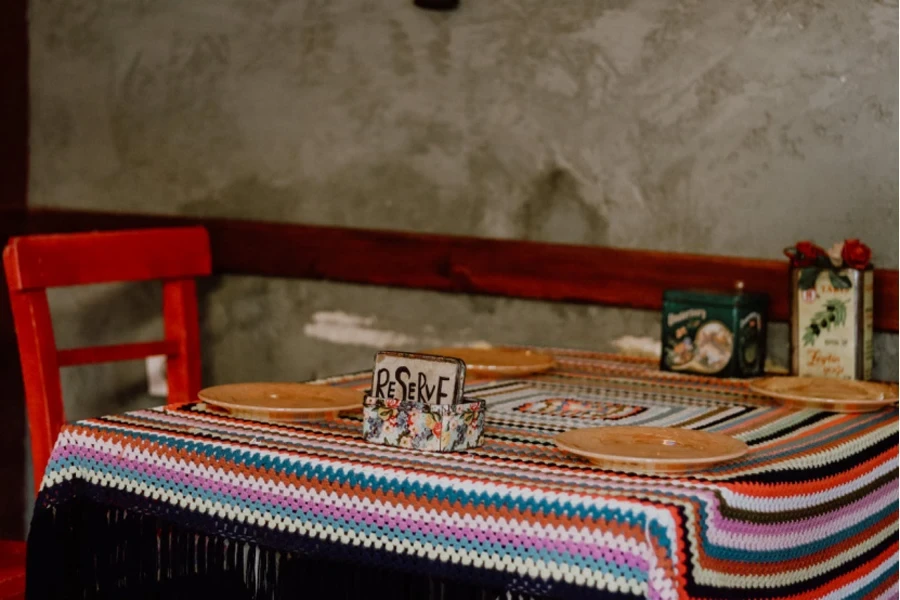
Material quality and durability
In the realm of tablecloth selection, material quality stands as a cornerstone, directly influencing the product’s longevity and performance. The choice of fabric, whether it be polyester, linen, or cotton, carries implications for durability. Polyester, for instance, is renowned for its resilience and low maintenance, making it a preferred choice in settings where longevity and ease of care are paramount. Linen, while exuding elegance, requires more meticulous care to maintain its pristine condition. Cotton, celebrated for its comfort, also demands attention in terms of maintenance to preserve its quality over time. The selection of material, therefore, is not merely a matter of aesthetic preference but a strategic decision that impacts the tablecloth’s lifespan and suitability for different environments.
Design and aesthetic appeal
The design elements of a tablecloth – encompassing color, pattern, and style – play a pivotal role in its selection. These elements are not just decorative features; they are integral in setting the tone and ambiance of a dining experience. The color palette can range from subtle, muted tones for formal settings to vibrant, lively hues for more casual or festive occasions. Patterns, too, vary widely, with some designs lending themselves to a more traditional look, while others embrace contemporary trends. The style of the tablecloth, whether it be minimalist, ornate, or somewhere in between, should align with the overall theme and decor of the setting. The design of a tablecloth is thus a key factor, reflecting not only current trends but also the specific atmosphere that one aims to create.
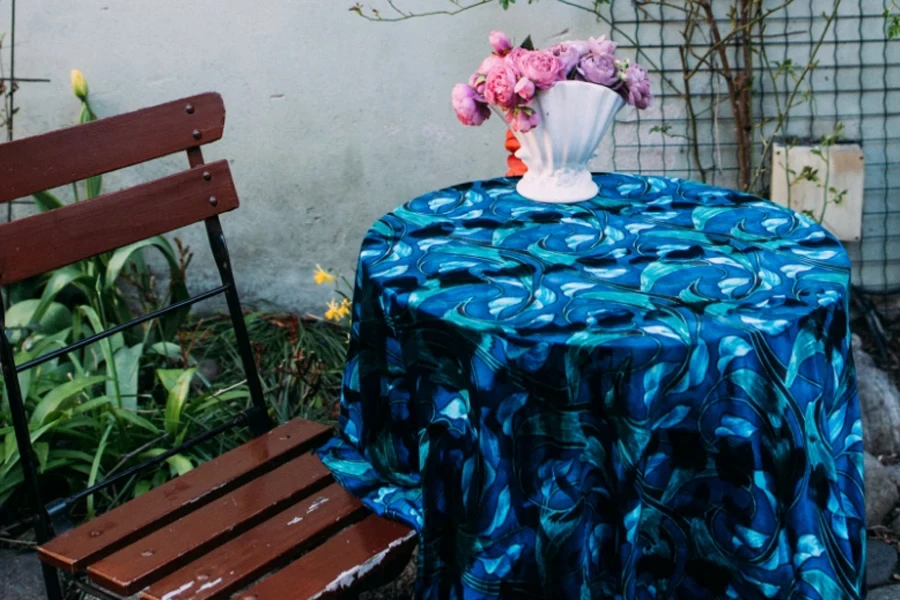
Practical considerations
Beyond aesthetics, practical considerations play a crucial role in tablecloth selection. Ease of maintenance is a critical factor, especially in high-usage environments. Tablecloths that are machine washable and resistant to stains and wrinkles are highly valued for their convenience and longevity. Stain resistance, in particular, is a sought-after feature, ensuring that the tablecloth remains presentable even after accidental spills. Size options are another important consideration, as the tablecloth must fit the dimensions of the table it is intended for. A well-fitting tablecloth not only looks better but also functions more effectively, staying in place and providing the necessary coverage. These practical aspects, from maintenance to size, are essential in choosing a tablecloth that meets both functional and aesthetic needs.
In summary, selecting the right tablecloth involves a careful balance of material quality, design elements, and practical considerations. Each factor plays a significant role in determining the tablecloth’s suitability for a particular setting and its ability to meet the demands of different environments. As such, a thoughtful approach to tablecloth selection can significantly enhance the dining experience, combining durability, style, and functionality.
Leading tablecloth models of 2024

Innovations in tablecloth design
The year 2024 has marked significant strides in tablecloth design, characterized by a fusion of technology and aesthetics. One of the most notable innovations is the integration of light-enhancing fabric technology, as seen in products like the FLE Technology-enhanced tablecloths. These tablecloths can absorb and reflect natural light, dramatically enhancing the ambiance of any setting. This technology, initially developed for projector screens, has been adapted for tablecloths, offering a unique visual experience, especially in outdoor or well-lit environments.
Another groundbreaking innovation is the development of smart textiles in tablecloths. These fabrics are embedded with micro-sensors that can detect spills and initiate a self-cleaning process. This advancement not only adds convenience but also extends the lifespan of the tablecloth, making it an ideal choice for high-usage settings like restaurants and banquet halls.
Sustainable materials have also taken center stage in 2024’s tablecloth designs. Manufacturers are increasingly using recycled and organic fabrics, reducing the environmental impact of their products. These eco-friendly tablecloths are not only sustainable but also boast enhanced durability and a softer feel, appealing to environmentally conscious consumers.
In terms of aesthetics, 2024 has seen a rise in customizable tablecloths. Advanced printing technologies now allow for high-resolution, custom designs to be printed on tablecloths. This capability enables businesses to tailor their table settings to specific themes or branding requirements, offering a personalized touch to their décor.
The innovations in tablecloth design in 2024 demonstrate a commitment to enhancing both the functionality and aesthetic appeal of tablecloths. From light-enhancing fabrics and smart textiles to sustainable materials and customizable designs, these advancements are reshaping the way tablecloths are used and perceived in various settings.
Top picks for various settings

Linen Tablecloth 90 X 132-Inch With Rounded Corners: Ideal for special events like weddings or anniversaries, this tablecloth is made of spun polyester and comes in bright white. It’s designed to cover a standard six-foot table and reaches the floor. Its classic design is versatile for any decorative style and is both stain and wrinkle-resistant, making it suitable for upmarket restaurants or formal events.
Benson Mills Flow Spillproof 60-Inch By 104-Inch Fabric Tablecloth: This tablecloth is a great choice for families, as it is designed to resist spills. Made of 100% polyester, it features a special coating that prevents water from seeping through, allowing liquids to bead on top for easy wiping. Its heavyweight design helps it stay in place, making it a practical option for everyday dining.
DII Spring & Summer Outdoor Tablecloth: Specifically designed for outdoor use, this tablecloth is perfect for patio tables. Made of 100% polyester, it is machine washable and features a durable surface that can be wiped clean. It’s designed for circular tables and includes a hole in the middle for a patio umbrella, making it ideal for outdoor gatherings.
Obstal Rectangle Table Cloth: This tablecloth is noted for its resistance to fading and wrinkles. Made of 100% polyester, it’s designed to repel liquids and is very easy to clean. Available in various colors, it’s a versatile choice for different occasions and settings.
Mokani Washable Cotton Linen Solid Embroidery Checkered Design Tablecloth: Made of high-quality cotton linen, this tablecloth features an understated embroidered design with tassel edges. It’s designed not to fade, even with direct sunlight exposure, and is available in a range of colors and patterns.
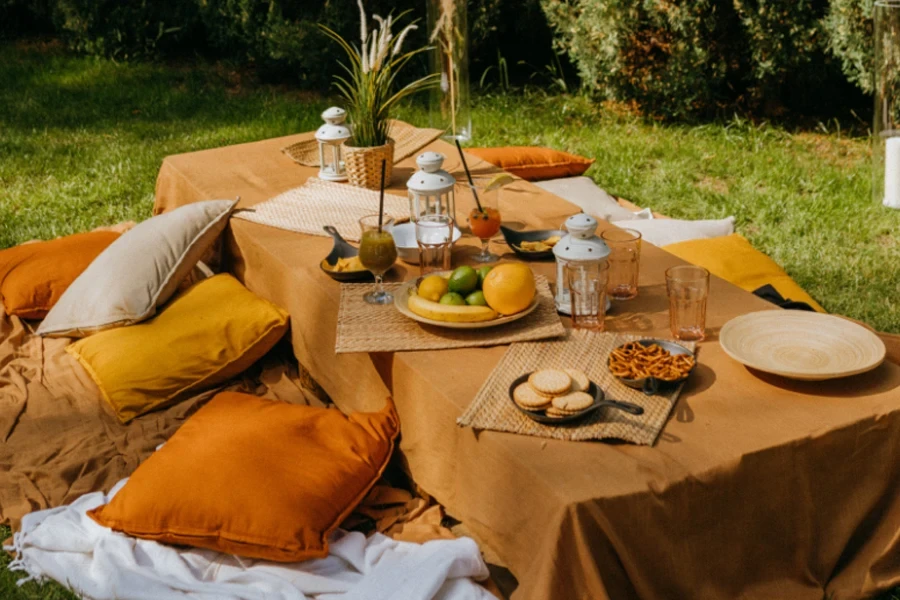
Williams Sonoma Tablecloth: This tablecloth features a design adorned with red berries, pine cones, and pine boughs, making it ideal for festive occasions. Made of cotton, it’s available in different sizes and shapes, including round and runner options. Priced at $170, it’s machine washable and coordinates with other Williams Sonoma products.
Food 52 Tablecloth: This tablecloth boasts a bold pattern hand-printed in India, created through a partnership with Block Shop and Food52. It’s a blend of linen and cotton, priced at $170, and is machine washable. The design adds a unique touch to holiday meals.
Sur la Table Tablecloth: Priced at $100, this cotton tablecloth features a classic plaid pattern in blue or soft orange and pink. It’s suitable for both holiday dinners and weeknight meals, and is machine washable.
Pottery Barn Tablecloth: This tablecloth, priced at $149, features a whimsical print with forest gnomes and is made from a blend of linen and cotton. It’s available in various lengths and is machine washable.
Sona Home Tablecloth: Crafted in India and designed in New York City, this square tablecloth features embroidered palm trees and leaves, priced at $298. Made from a cotton and linen blend, it’s machine washable and suitable for year-round use.
Amazon Linen Tablecloth: This 100% linen tablecloth is priced at $95 and comes in six sizes and 26 colors. It’s machine washable and features a classic hemstitched edge.
Pottery Barn Provence-Inspired Tablecloth: Priced at $109, this cotton tablecloth is colorfast and features a block-printed design that transports you to the lavender fields of southern France.
These tablecloths cater to a variety of needs, from formal events to everyday family use, and outdoor gatherings, offering both style and practicality.
Conclusion
The evolving tablecloth market in 2024 presents a diverse array of choices for online retailers, catering to various needs from formal events to casual dining and outdoor settings. Key takeaways include the importance of material quality and design in enhancing durability and aesthetic appeal, and the growing preference for eco-friendly options. Retailers should consider these factors, along with practical aspects like ease of maintenance and size options, to optimize their tablecloth selections. This approach ensures a balance between style, functionality, and sustainability, meeting the dynamic demands of consumers and enhancing dining experiences across different environments.
